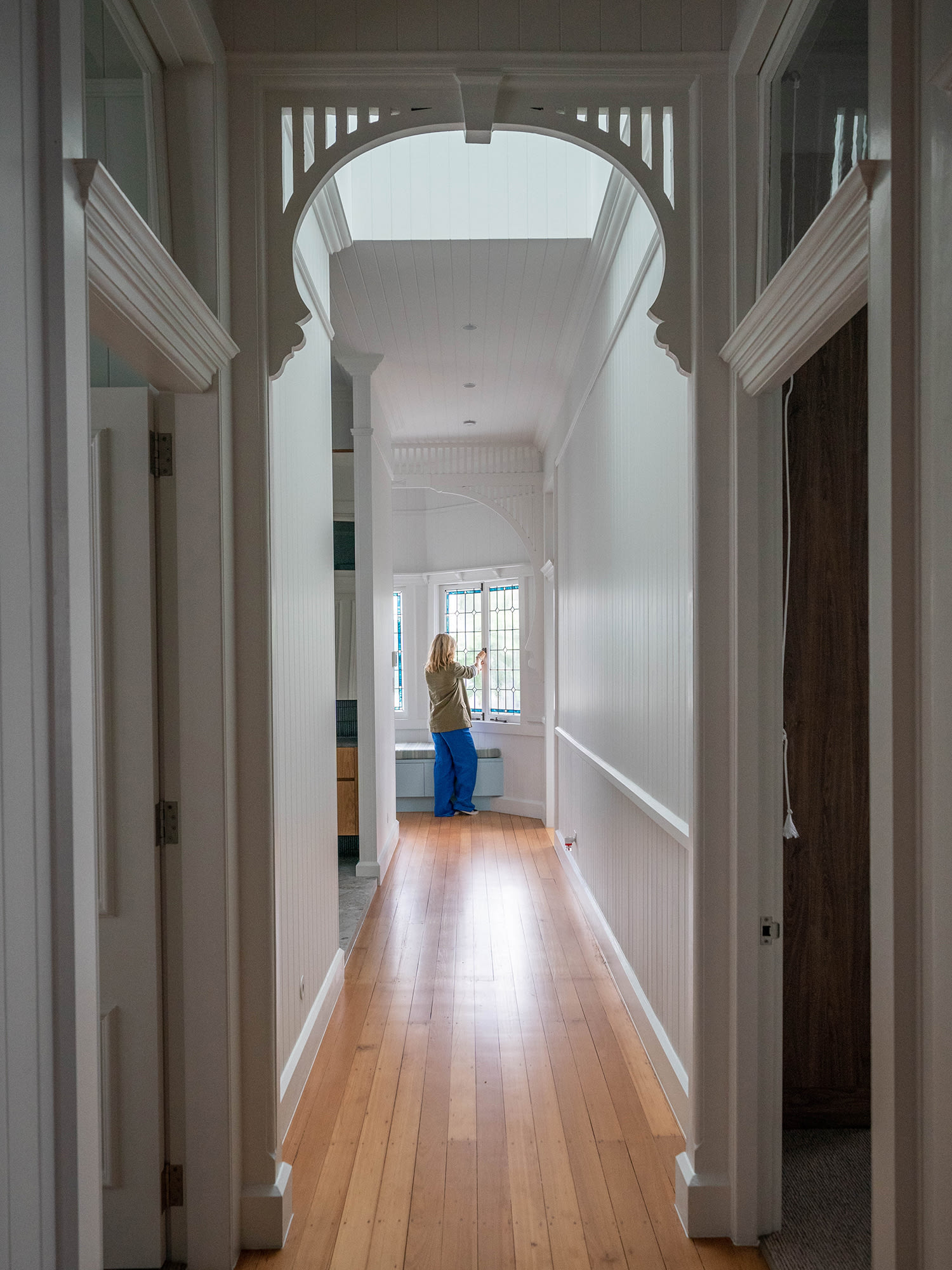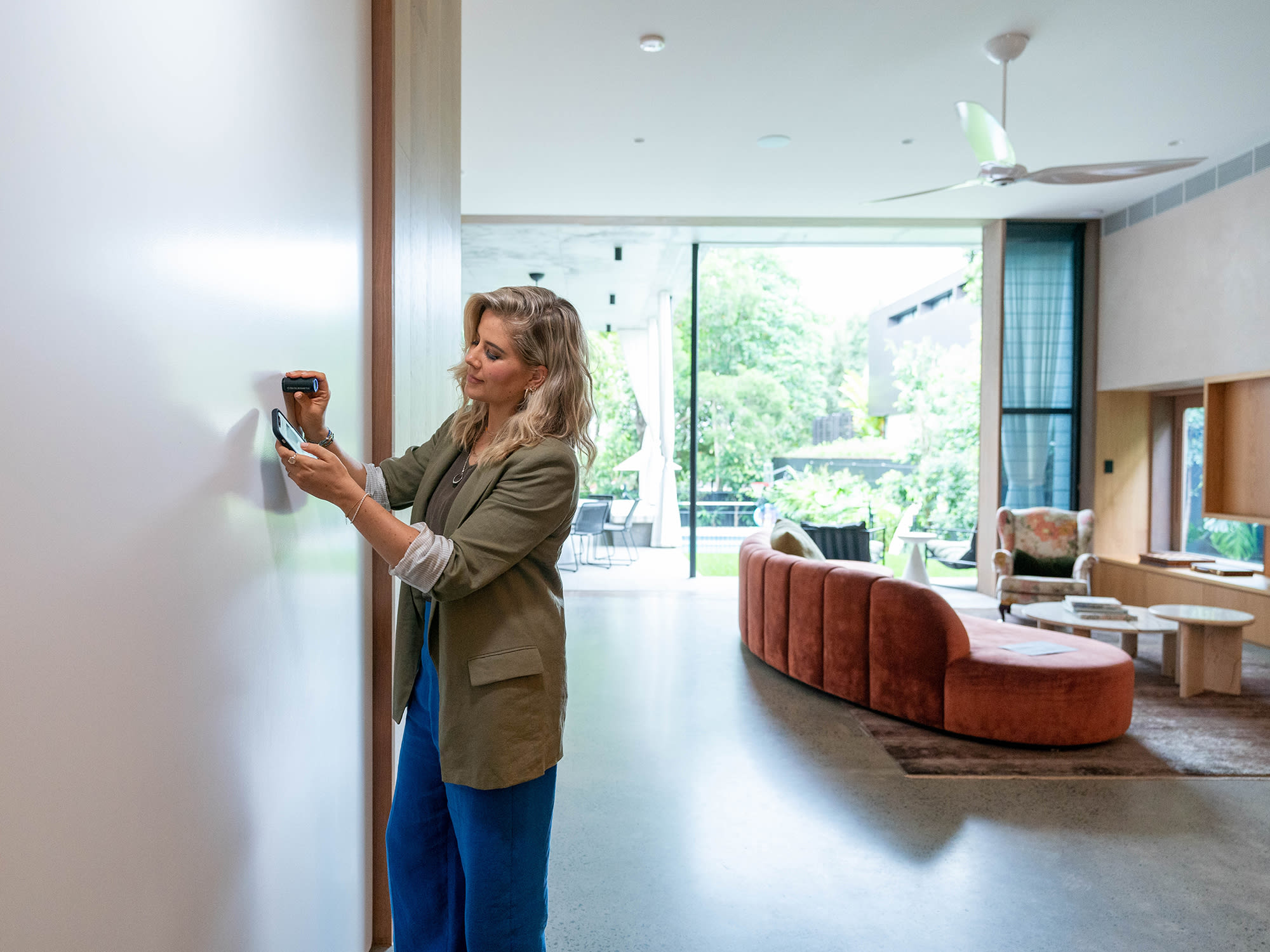No matter where you sit on the topic of painting with white – love it, hate it or have no strong feelings either way – there is likely going to be some instance when you’ll need to consider it.
So ubiquitous is white in the home that it’s become the brand colour for entire trends, namely the ever-popular Hamptons and coastal looks. Yet even in the most colourful homes, white is used to offset colour or to differentiate or zone spaces.
Therefore, if you have an upcoming renovation or are repainting your home, it’s important to understand the many nuances of white paint.
Interior stylist and renovation guru Carlene Duffy helps us navigate the applications of white paint in the home and some of its key considerations.

Even if colour is a big feature of a home, white may still be used on its walls or ceilings.
Home interior
Your primary concern should be the type of home that you’re painting and where it sits in its environment; how the light hits it, the colour of flooring, and the positioning of windows, along with the colourings of furniture and accessories that fill the space.
“Consider the style of your home, the location, and most importantly, the quality of natural light your space receives,” explains Carlene.
“When choosing a white for your walls or ceiling, you should also consider the other dominant colours in your space, especially the colour of your flooring which can have an impact. Light bounces off wooden floorboards and can be absorbed by darker carpets.”

Consider light and environment when choosing whites for your interiors.
Certain parts of your home will receive more natural light than others, so keep this in mind if you are planning on picking the same white throughout. Not sure where to begin? Kick things off with a sample pot of Taubmans Crisp White, one of the brand’s most versatile whites.
A darker hallway, for example, may require a cooler white such as Taubmans Miss Universe or Akimbo.
Also keep in mind that the brilliancy of your white can be offset by the colour of your globe. Always consider a warmer globe for a more brilliant white to avoid that clinical look.
Matching whites
If you’ve recently extended or are planning an extension, matching whites with the existing part of your home becomes a key concern.
While two whites may look very similar in a small swatch, on a large wall it’s a different story, explains Carlene. So sample testing becomes extremely important.
“I can’t stress this enough: always, always, always sample your colours, with two coats in large swatches, and let them dry before making any decisions,” urges Carlene.

Carlene uses the Coloursmith app to match whites in her own home.
Taubmans’ colour-creating tool Coloursmith makes the job of matching whites even easier. You can use the Coloursmith reader tool with your phone app to find the right white to match an existing finish, then order a sample pot of the colour-match from the app directly to your door.
Home exterior
White is well and truly having a moment in the realm of home exteriors, particularly as the Hamptons and coastal trends see no signs of slowing down.
White can add a freshness, interest or depth to weatherboards, cladding or bricks and can range from airy and whimsical to timeless and classic, depending on which shade you choose.
Some popular whites for exteriors, because of their light-absorbing qualities, include: Taubmans Gazebo, Pebble Bay, Aspen Snow or Thin Ice.
White can also be used for defining or framing an area, allowing the main body of colour to pop. When using layers of white it’s best to use a brighter cleaner white for this effect. Taubmans Brilliant White is the go-to white for white for framing, doors and windows.
But Carlene says you need to be extra mindful of the impacts of light when choosing whites for exteriors, as “direct sun will drastically change the colour.”
“Make sure you sample your choices to observe the paint over different times of the day,” she says.
Unlike certain areas inside the home the exterior of your home will always come into direct contact with sunlight, so you may be better off leaning towards whites with undertones of yellow and brown, also labelled neutral whites.
These neutral undertones will take out some starkness to the white once the sunlight hits.

A home exterior will attract more sunlight, so be wary of which white you choose.
So, don’t get overwhelmed by the myriad of whites out there.
As Carlene says, painting with whites requires the same principles as any paint job – consider light, use the right tools and always, always sample it first!